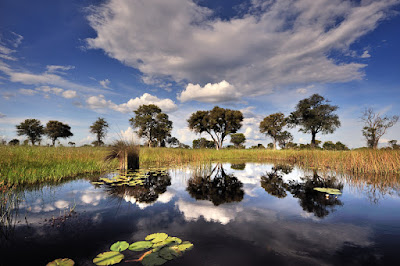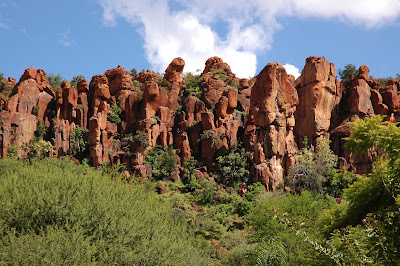The beautiful part of Namibia is extraordinary for the variety of wildlife found.
Etosha's Wildlife
Etosha's Wildlife
Etosha National Park is home to four of the Big 5. Elephants and lions are common in the park, while the elusive leopard hides in the densely vegetated areas. However, one of the best reasons to visit Etosha is its healthy population of black rhinoceros. This archaic beast is endangered and the waterholes are probably among the best places in the world to see this precious animal.
Zebra’s
Zebra’s
There are only three species of zebra extant – the plains zebra, including the Burchell’s zebra found in Etosha; the mountain zebra, including Hartmann’s mountain zebra found in north-western Namibia. Zebras are very social animals. They live in groups ranging from small ‘harem’ groups dominated by a stallion, to large herds. A zebra’s stripes are basically vertical around its fore quarters, but horizontal around its rump. Each animal’s stripes are different, and as individually characteristic as fingerprints on a human. The purpose of the stripes is not known.
Cheetahs are famous for their speed and agility but are also one of Africa's most endangered big cats.The CCF gives guest the opportunity to experience the cheetah like nowhere else.
Bird life
The Zambezi or Caprivi Strip can be found in the extreme north east of Namibia and this region alone is home to over 425 species of birds. The network of rivers and deltas formed by the confluence of the Kwando, Zambezi and Chobe rivers create an ideal space for avid bird watchers to catch a glimpse of some of the unique birdlife on offer in Namibia.
The African Pygmy Goose
Pel’s Fishing Owl
Lions
Most lions are concentrated in three separate populations: the central Kunene Region and the Etosha National Park, eastern Otjozondjupa and Kavango, and eastern Caprivi. However, lions roam over large areas and some individuals may move from one population to another.
Giraffe
Giraffe are widely and thinly spread across a broad zone in the northern half of Namibia, including the desert landscapes of Damaraland and the Kunene region.
For more information please contact us at
























































